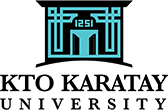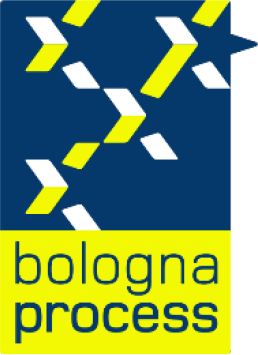Medical Imaging Techniques
Course Details

KTO KARATAY UNIVERSITY
Vocational School of Medical Services
Programme of Medical Imaging Techniques
Course Details
Vocational School of Medical Services
Programme of Medical Imaging Techniques
Course Details

| Course Code | Course Name | Year | Period | Semester | T+A+L | Credit | ECTS |
|---|---|---|---|---|---|---|---|
| 02940001 | Applied Course | 2 | Spring | 4 | 0+40+0 | 20 | 20 |
| Course Type | Compulsory |
| Course Cycle | Associate (Short Cycle) (TQF-HE: Level 5 / QF-EHEA: Short Cycle / EQF-LLL: Level 5) |
| Course Language | Turkish |
| Methods and Techniques | - |
| Mode of Delivery | Face to Face |
| Prerequisites | - |
| Coordinator | Lect. Merve ARI |
| Instructor(s) | Lect. Merve ARI |
| Instructor Assistant(s) | - |
Course Content
Use of X-ray, MR, CT, Scopi, DEXA devices, shooting positions and application of Nuclear Medicine issues on the patient in a hospital environment.
Objectives of the Course
In this course, it is aimed to enable students to reinforce their knowledge by applying the theoretical education they received during three semesters and to contribute to their being more ready for business life.
Contribution of the Course to Field Teaching
| Basic Vocational Courses | X |
| Specialization / Field Courses | X |
| Support Courses | |
| Transferable Skills Courses | X |
| Humanities, Communication and Management Skills Courses | X |
Relationships between Course Learning Outcomes and Program Outcomes
| Relationship Levels | ||||
| Lowest | Low | Medium | High | Highest |
| 1 | 2 | 3 | 4 | 5 |
| # | Program Learning Outcomes | Level |
|---|---|---|
| P1 | Has the knowledge to evaluate and apply shooting positions related to the field of medical imaging techniques, technical infrastructure and physics principles of imaging devices, radiation safety and radiation protection rules, pharmacological structures of contrast agents, side effects and risk factors, and uses applied knowledge. | 5 |
| P2 | Has knowledge of general medical terms, first aid issues related to anatomical and physiological issues related to the field of health, and uses applied knowledge. | 5 |
| P | 5 | |
| P | 5 |
Course Learning Outcomes
| Upon the successful completion of this course, students will be able to: | |||
|---|---|---|---|
| No | Learning Outcomes | Outcome Relationship | Measurement Method ** |
| O1 | Ability to understand the application requirements of imaging processes in the field of medical imaging techniques by associating them with theoretical foundations. | P.1.2 | 7 |
| O2 | Ability to apply theoretical knowledge of imaging processes in the field of medical imaging techniques on the patient. | P.1.3 | 7 |
| O3 | Ability to compare and analyze the application results of different approaches in imaging processes in the field of medical imaging techniques. | P.1.4 | 7 |
| O4 | Ability to develop strategies in the field of medical imaging techniques by combining basic theoretical and practical knowledge about the field of health. | P.2.5 | 7 |
| O5 | Making suggestions for improvements in the field of medical imaging techniques by using basic theoretical and practical knowledge about the field of health. | P.2.6 | 7 |
| ** Written Exam: 1, Oral Exam: 2, Homework: 3, Lab./Exam: 4, Seminar/Presentation: 5, Term Paper: 6, Application: 7 | |||
Weekly Detailed Course Contents
| Week | Topics |
|---|---|
| 1 | Hospital practice |
| 2 | Hospital practice |
| 3 | Hospital practice |
| 4 | Hospital practice |
| 5 | Hospital practice |
| 6 | Hospital practice |
| 7 | Hospital practice |
| 8 | Hospital practice |
| 9 | Hospital practice |
| 10 | Hospital practice |
| 11 | Hospital practice |
| 12 | Hospital practice |
| 13 | Hospital practice |
| 14 | Hospital practice |
Evaluation Method and Passing Criteria
| In-Term Studies | Quantity | Percentage |
|---|---|---|
| Attendance | - | - |
| Laboratory | - | - |
| Practice | 1 | 100 (%) |
| Field Study | - | - |
| Course Specific Internship (If Any) | - | - |
| Homework | - | - |
| Presentation | - | - |
| Projects | - | - |
| Seminar | - | - |
| Quiz | - | - |
| Listening | - | - |
| Midterms | - | - |
| Final Exam | - | - |
| Total | 100 (%) | |
ECTS / Working Load Table
| Quantity | Duration | Total Work Load | |
|---|---|---|---|
| Course Week Number and Time | 14 | 40 | 560 |
| Out-of-Class Study Time (Pre-study, Library, Reinforcement) | 14 | 3 | 42 |
| Midterms | 0 | 0 | 0 |
| Quiz | 0 | 0 | 0 |
| Homework | 0 | 0 | 0 |
| Practice | 0 | 0 | 0 |
| Laboratory | 0 | 0 | 0 |
| Project | 0 | 0 | 0 |
| Workshop | 0 | 0 | 0 |
| Presentation/Seminar Preparation | 0 | 0 | 0 |
| Fieldwork | 0 | 0 | 0 |
| Final Exam | 0 | 0 | 0 |
| Other | 0 | 0 | 0 |
| Total Work Load: | 602 | ||
| Total Work Load / 30 | 20,07 | ||
| Course ECTS Credits: | 20 | ||
Course - Learning Outcomes Matrix
| Relationship Levels | ||||
| Lowest | Low | Medium | High | Highest |
| 1 | 2 | 3 | 4 | 5 |
| # | Learning Outcomes | P1 | P2 |
|---|---|---|---|
| O1 | Ability to understand the application requirements of imaging processes in the field of medical imaging techniques by associating them with theoretical foundations. | 5 | - |
| O2 | Ability to apply theoretical knowledge of imaging processes in the field of medical imaging techniques on the patient. | 5 | - |
| O3 | Ability to compare and analyze the application results of different approaches in imaging processes in the field of medical imaging techniques. | 5 | - |
| O4 | Ability to develop strategies in the field of medical imaging techniques by combining basic theoretical and practical knowledge about the field of health. | - | 5 |
| O5 | Making suggestions for improvements in the field of medical imaging techniques by using basic theoretical and practical knowledge about the field of health. | - | 5 |
